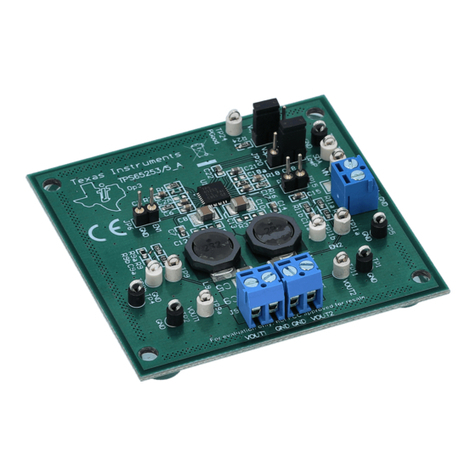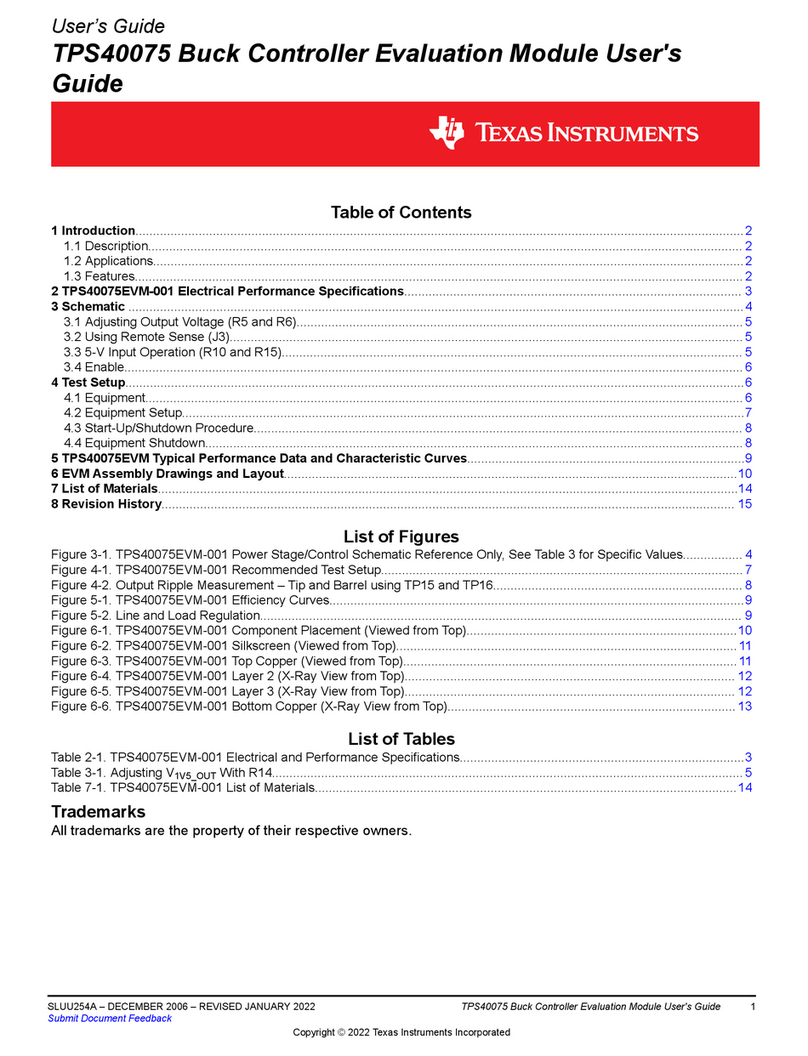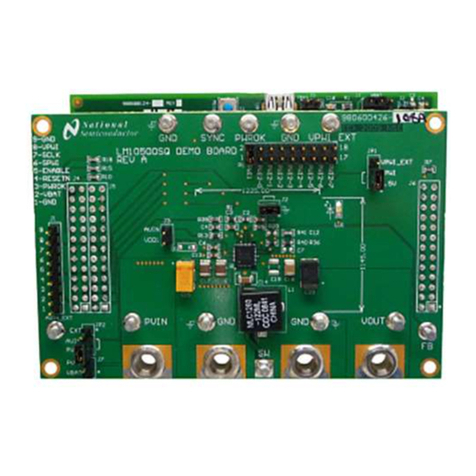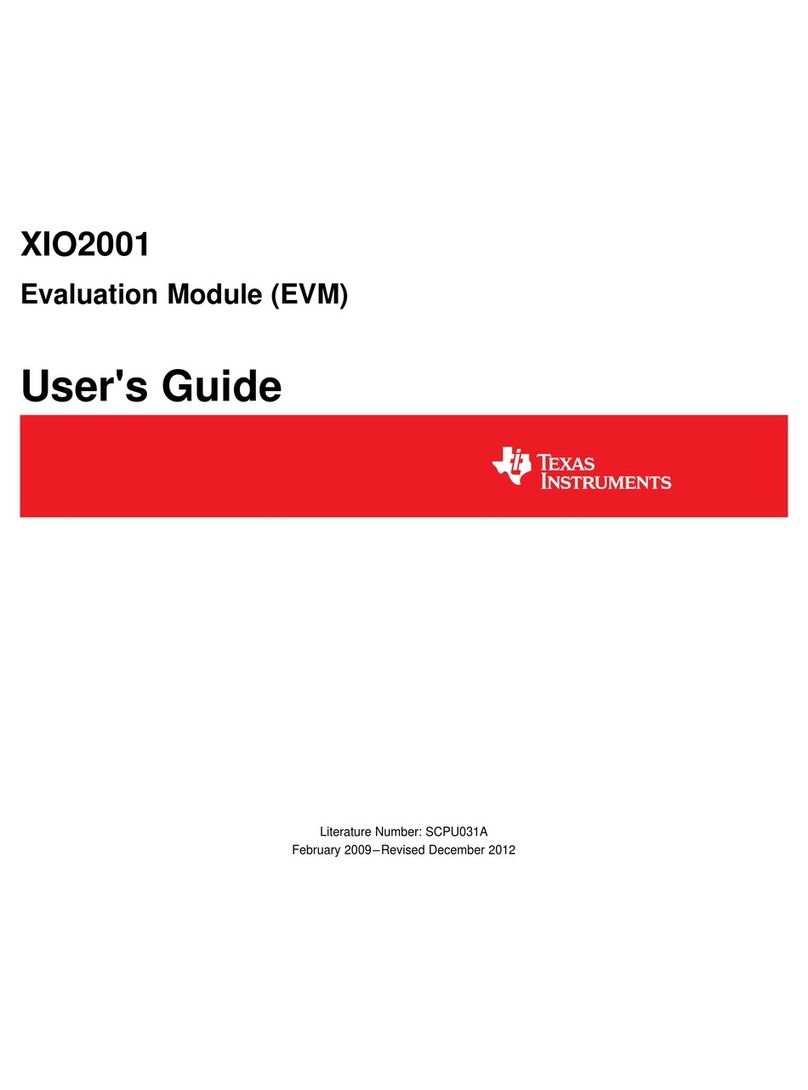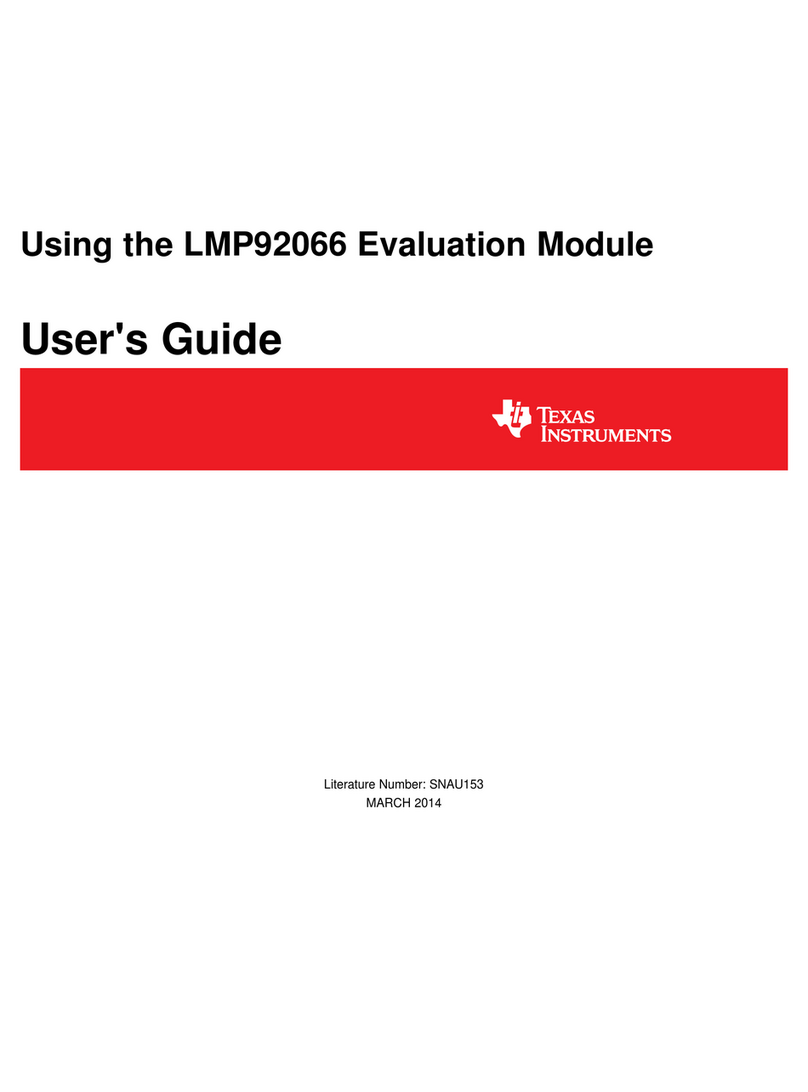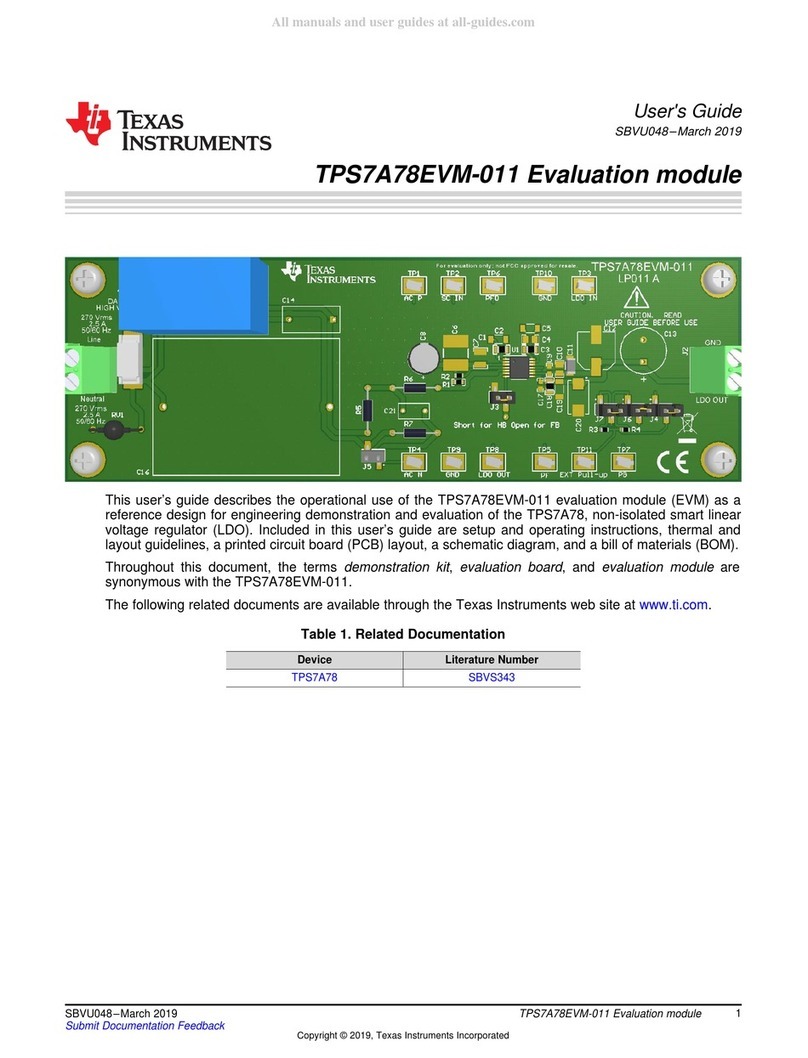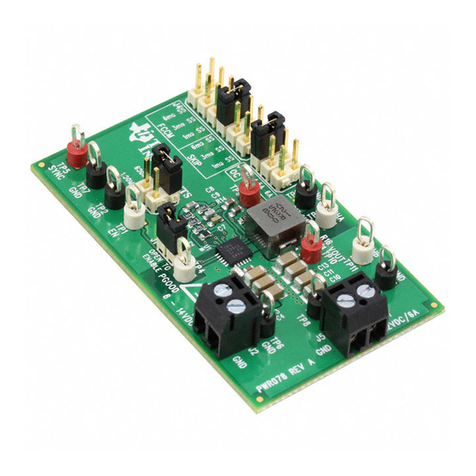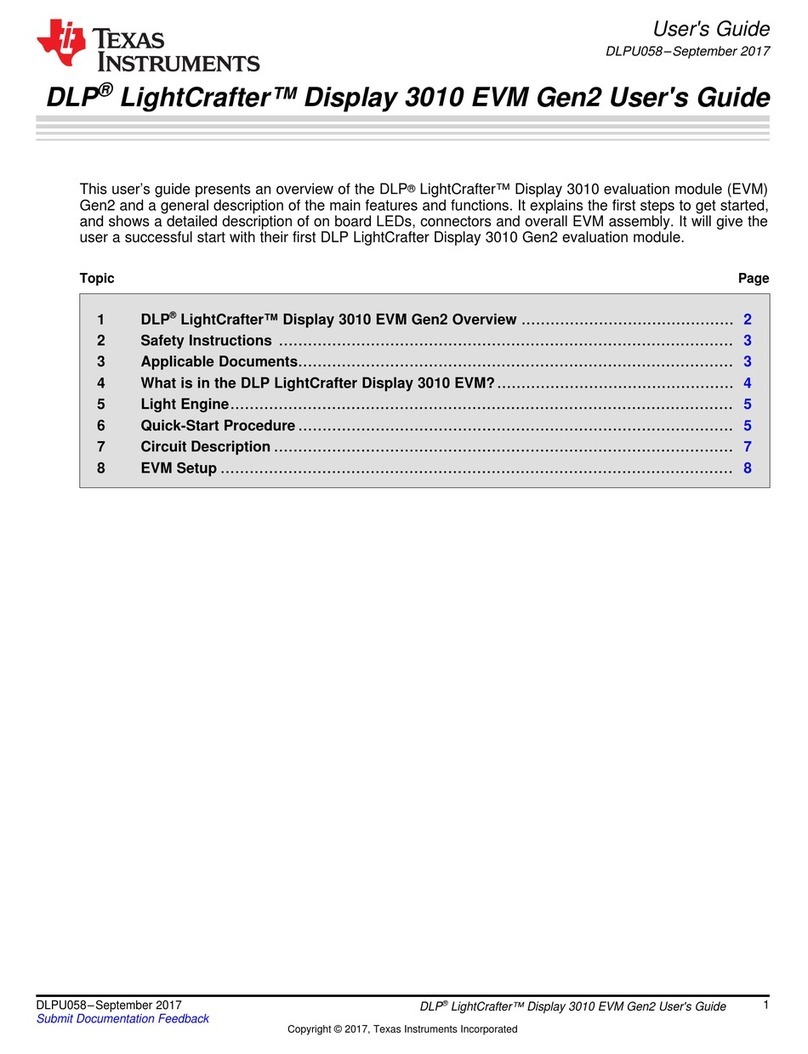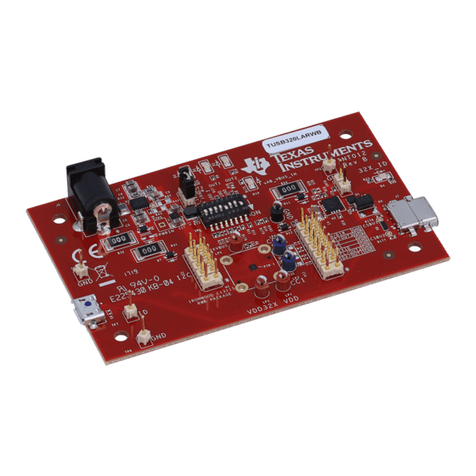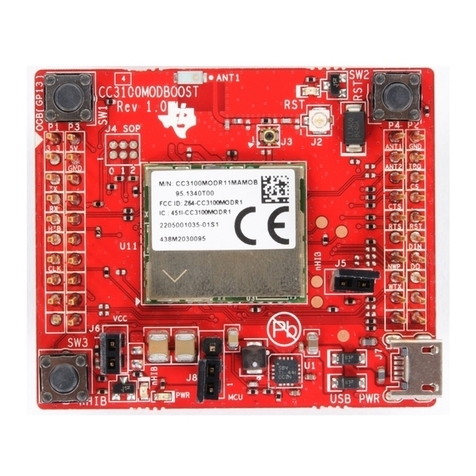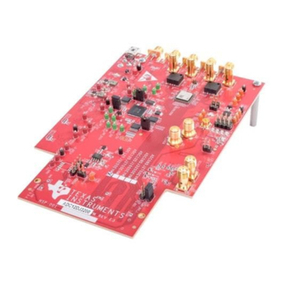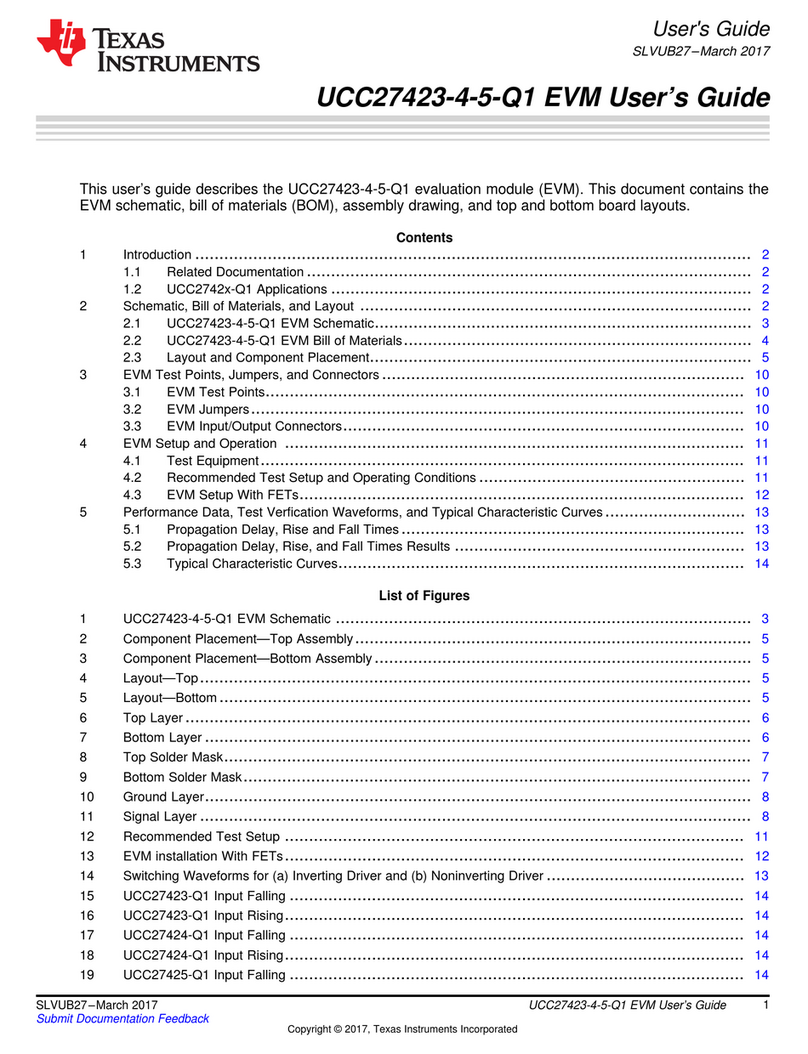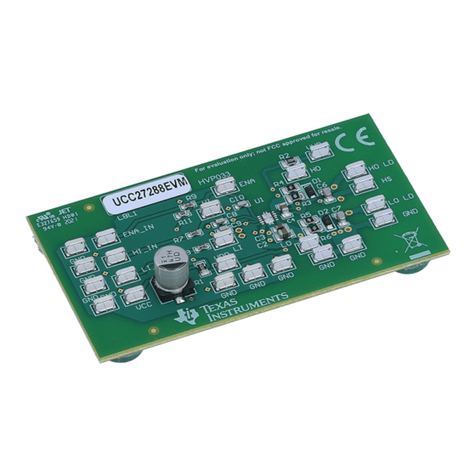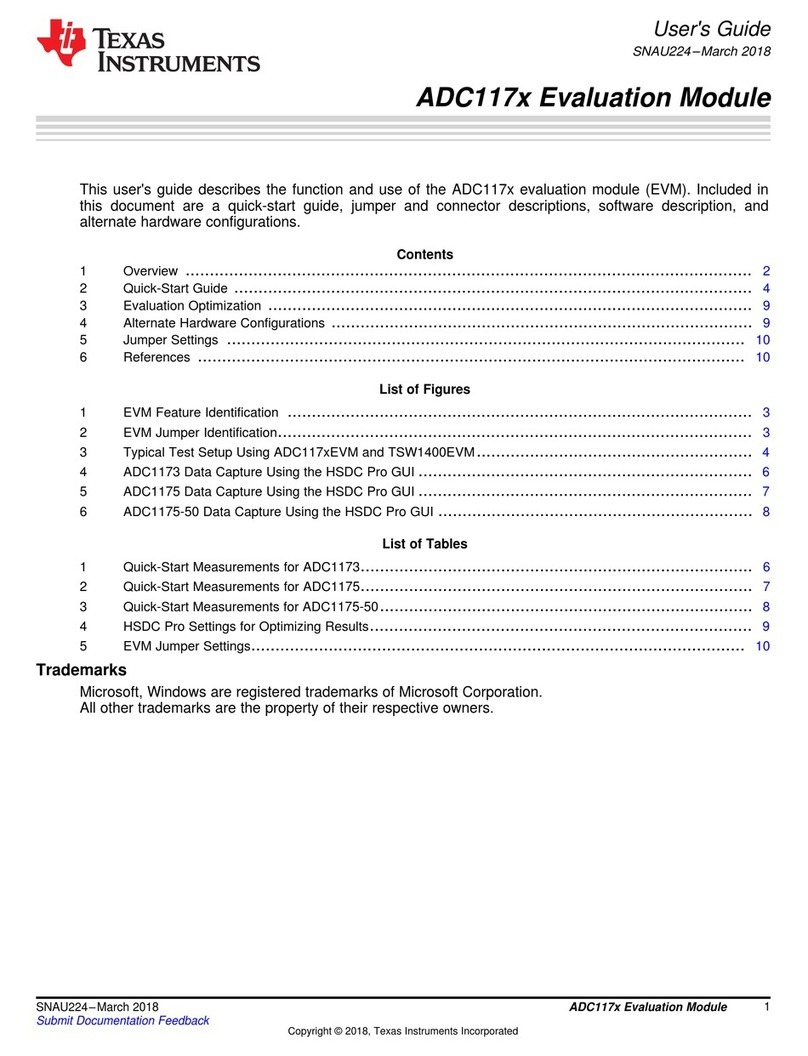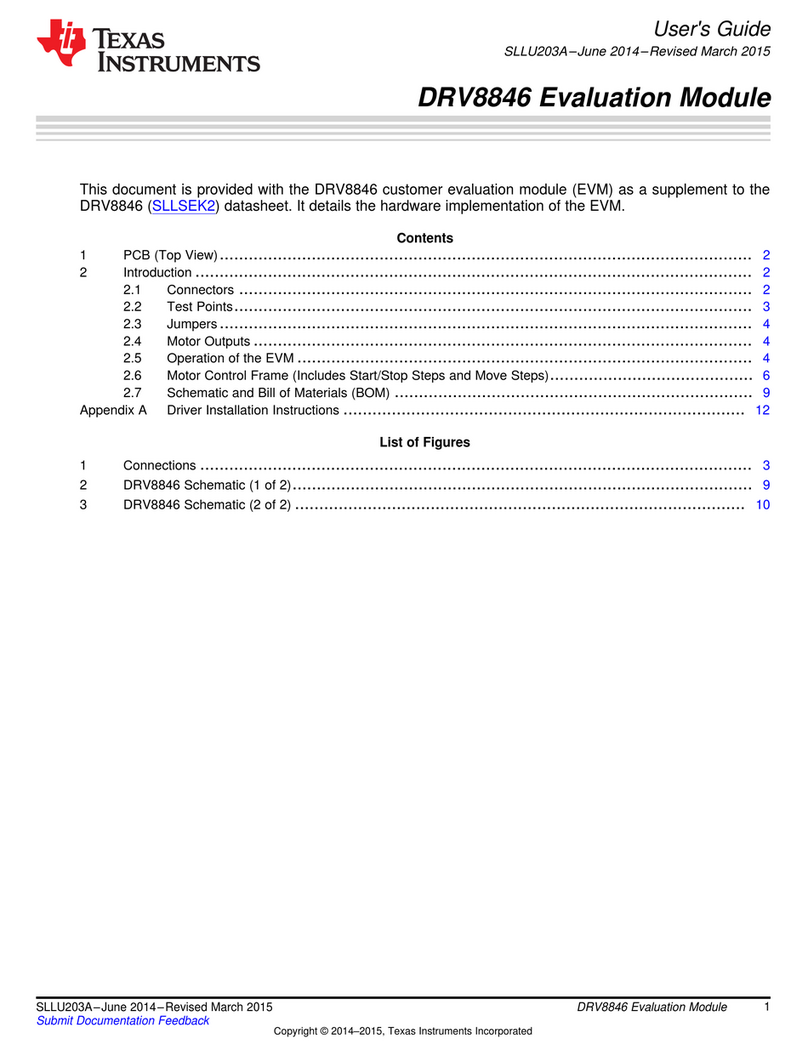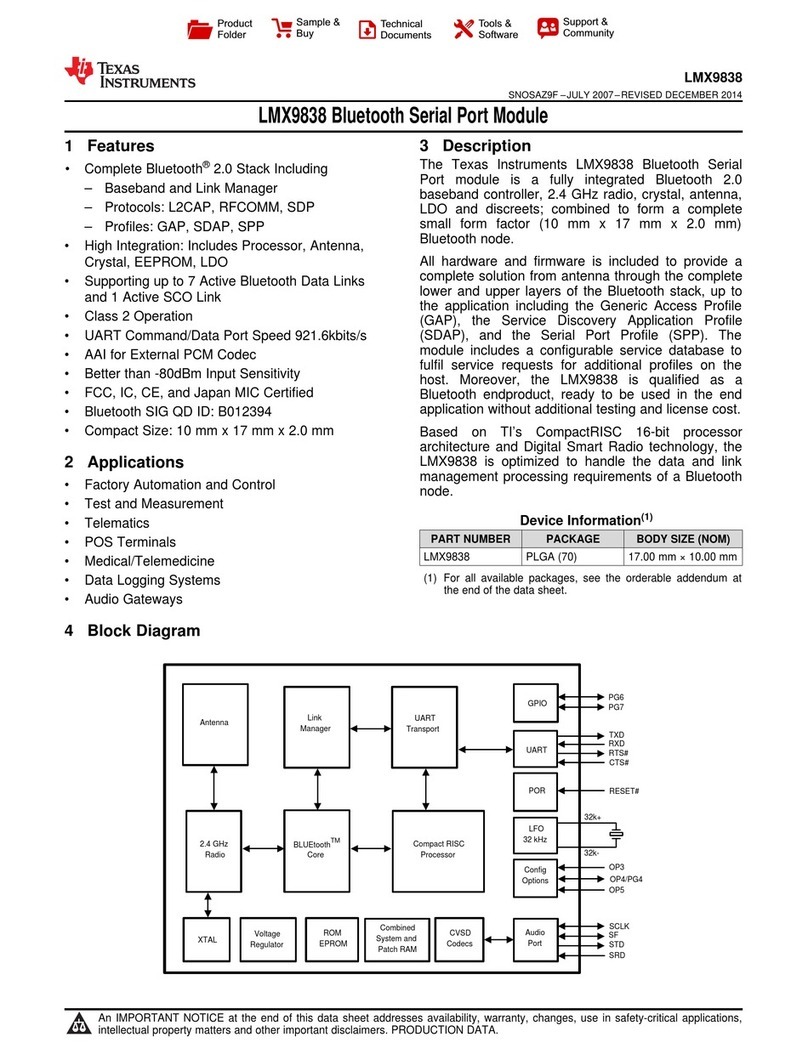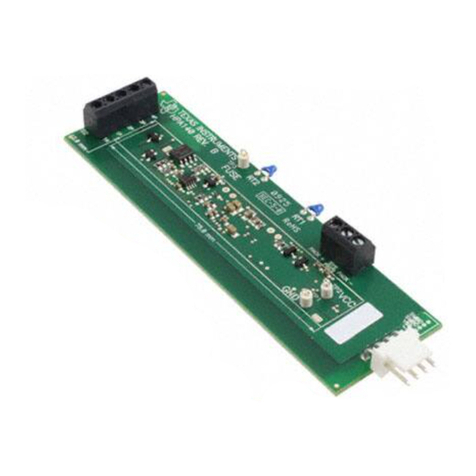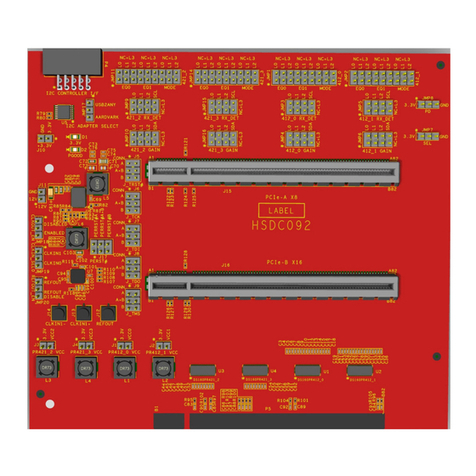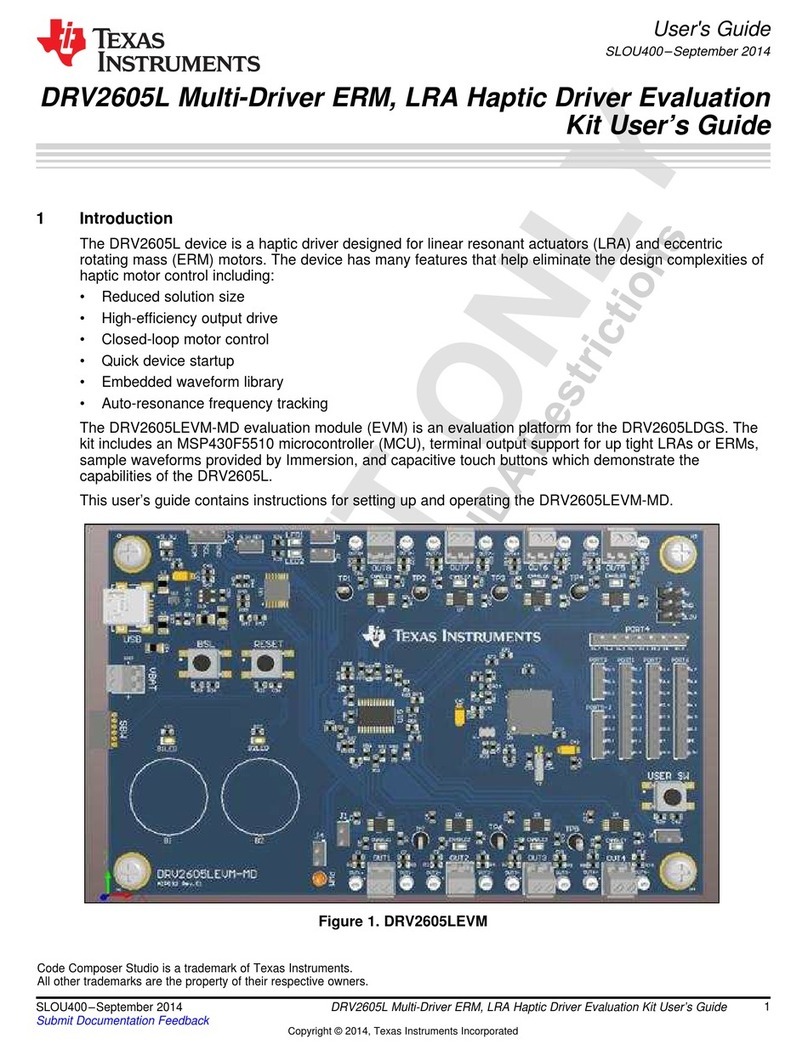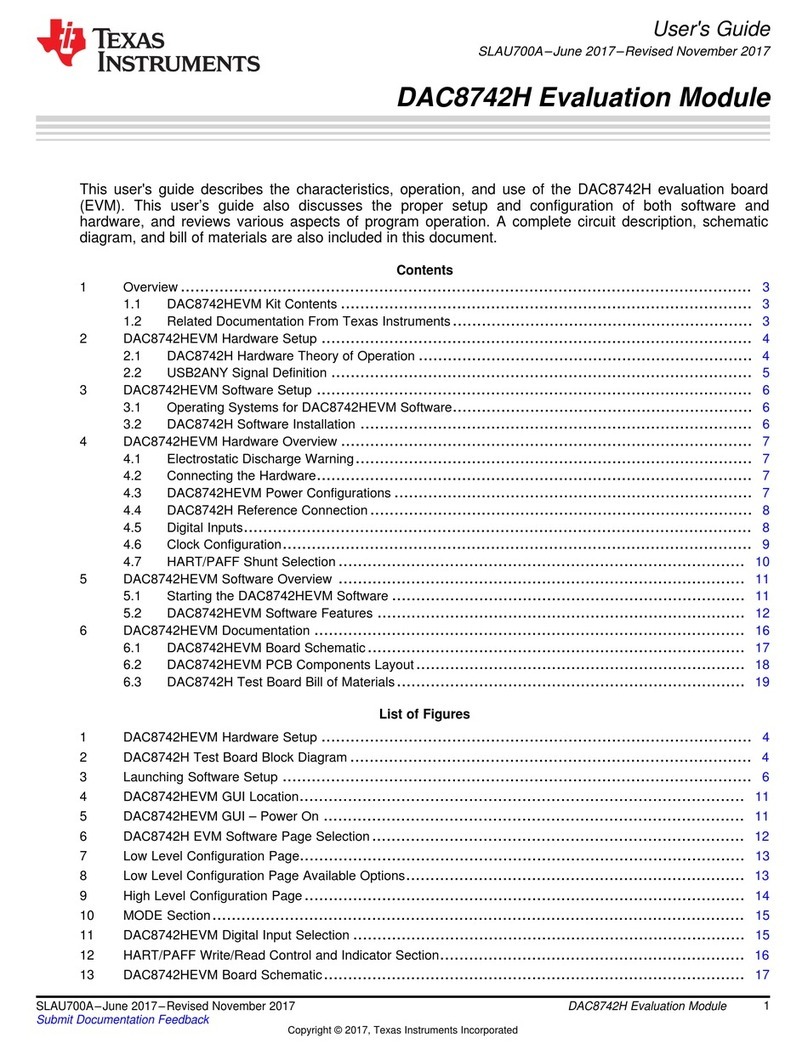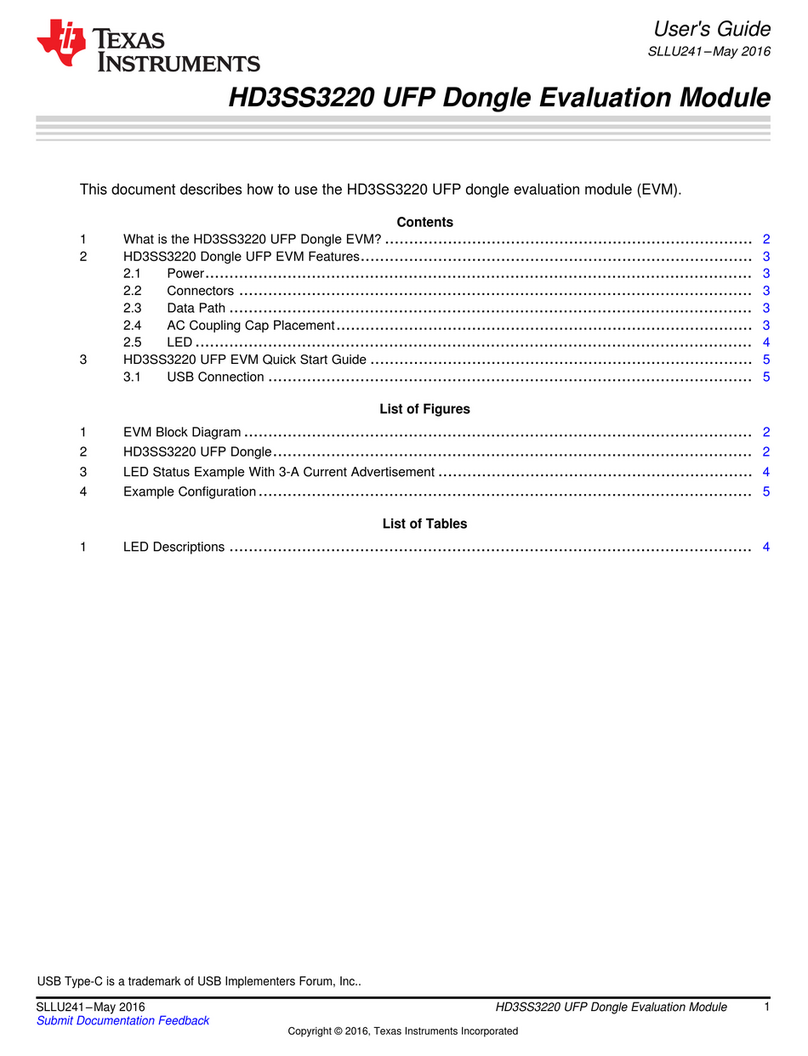
Table 2-4. Jumper Description
Jumper Description Factory Default
JP1 Use JP1 to connect the default feedback resistor and set the charger to the default 7
cell battery. Installed
JP2 Use JP2 to connect a new feedback resistor to program a different cell count. Not installed
JP3 Use JP3 to connect external IOUT resistor. JP3 can be shorted to PGND to turn off
hardware output current limiting.
Not installed
JP4 Shunt JP4 to use default IOUT resistor. By closing JP4, the default IOUT current is
set to 10 A.
Installed
JP5 Shunt JP5 to bias TS. Installed
JP6 With JP5 shunted (REGN connected for voltage divider). Shunt JP6 to set TS status
to normal.
Installed
JP7 With JP5 shunted (REGN connected for voltage divider). Use JP7 to connect
external resistor to change TS status.
Not installed
JP8 Use JP8 to connect external FSW_SYNC resistor. Not installed
JP9 Shunt JP9 to use default FSW_SYNC resistor. By closing JP9, the default switching
frequency is set to 250 kHz.
Installed
JP10 Shunt JP10 to use default IIN resistor. By closing JP10, the maximum input current
is set to 8 A.
Installed
JP11 Use JP11 to connect external IIN resistor. JP11 can be shorted to PGND to turn off
hardware input current limiting.
Not installed
JP12
Use JP12 to select the gate driver source. Shunt pin1 to pin2 to use IC internal
LDO REGN output. Shunt pin2 to pin3 to use external gate drive supply. Maximum
external gate drive supply can be up to 11 V.
Pin1 and pin2 shunted
JP13 Shunt JP13 to enable controller in forward mode. Open JP13 to disable controller.
The /CE pin can also be used as a general purpose indicator.
Installed
JP14 Shunt JP14 to connect /INT to a pullup rail. Installed
JP15 Shunt JP15 to connect STAT1 to a pullup rail. The STAT1 pin can also be used as a
general purpose indicator.
Installed
JP16 Shunt JP16 to generate on board 3.3-V pullup rail. Installed
2.3 Recommended Operating Conditions
Table 2-5. Recommended Operating Conditions for BQ25750EVM
Description MIN TYP MAX UNIT
VIN (J1) Input voltage to the EVM 4.2 55(1) V
VOUT (J3) Output voltage of the EVM 3.3 55(1) V
IIN (J1) Input current of the EVM 10(3) (4) A
IOUT (J3) Output current of the EVM 10(3) A
Regulator output power Output power of the EVM 400(3) W
EXT_DRV (J6) Voltage applied to DRV_SUP pin of the regulator 4 11 V
EVM Operating Ambient
Temperature (TA) 25(2) °C
(1) Nodes on the EVM can have high spikes above the input voltage (in buck mode) or output voltage (in boost mode) level due to the
high di/dt and dv/dt electrical flow associated with switch-mode power supplies. Switch node voltage can swing up to input or output +
inductive spike level. High-side gate drives can swing up to switch node voltage + 11 V (DRV_SUP supply voltage dependent) + gate
drive inductive spike level. Observe safety precautions at all times.
(2) Connectors, bump-ons, and jumpers on the EVM are not good choices for evaluation under temperatures that greatly deviate from a
room temperature of 25°C. Please refer to the Bill of Materials (BOM) for temperature ratings of board components.
(3) TI recommends thermal monitoring (for example, using a thermal camera) if the power-stage output current > 5 A or total output power
> 100 W.
(4) The default EVM input current limit is set to 8 A through the IIN pin. The current-limiting feature can be turned off by setting the
EN_IIN_PIN bit to '0', changing the IIN pin resistor, or shorting the IIN pin to PGND through JP11.
www.ti.com Hardware
SLUUCY7 – NOVEMBER 2023
Submit Document Feedback
BQ25750 Evaluation Module 7
Copyright © 2023 Texas Instruments Incorporated
